How two amateurs with full-time jobs trained for the world’s toughest event, the Race Across America
With full-time jobs and calendars full of commitments, how do amateur riders find the time and energy to prepare? We spoke to two set to take on the challenge
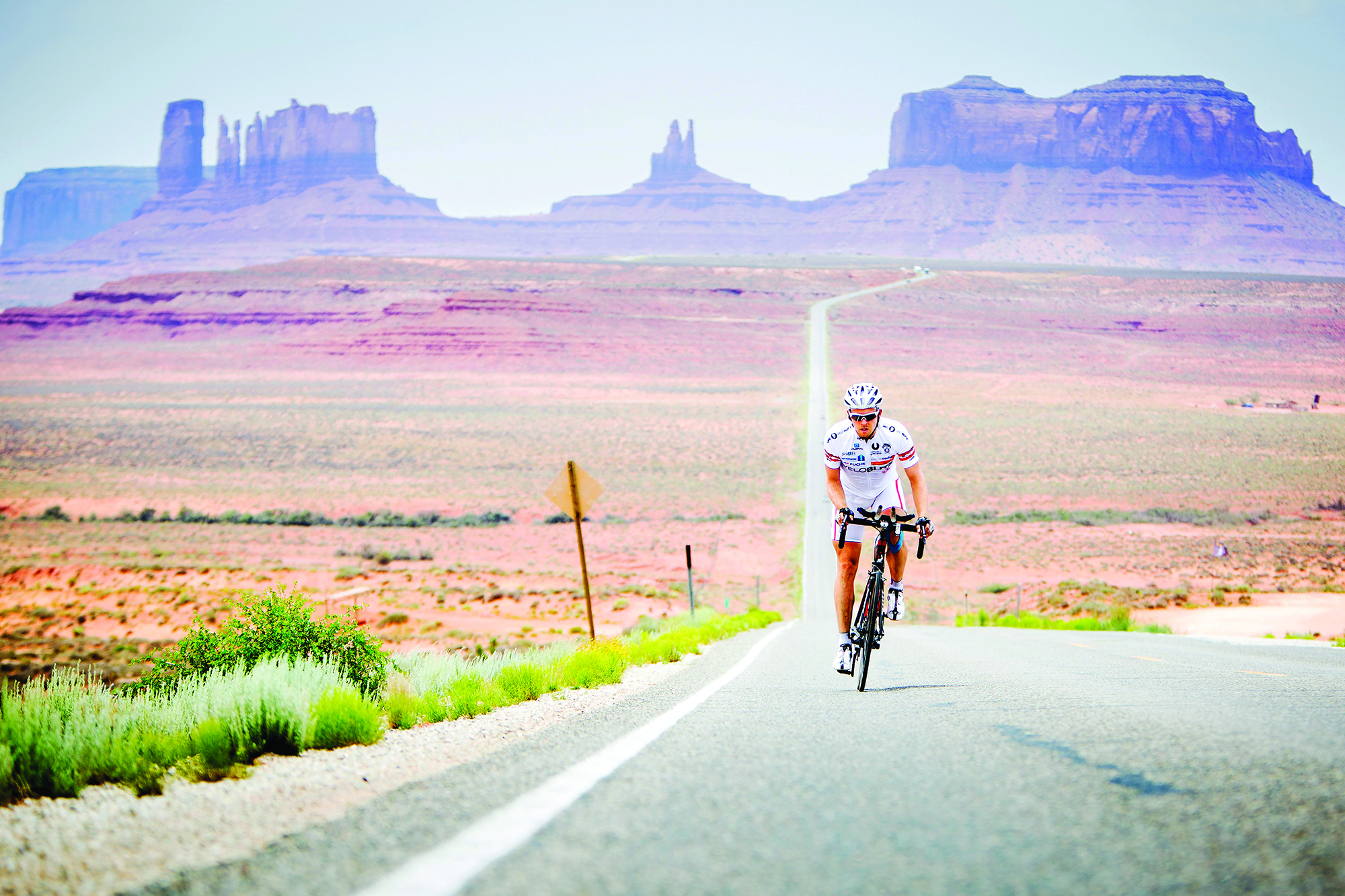
Race Across America (Alamy/Daniel Gould)
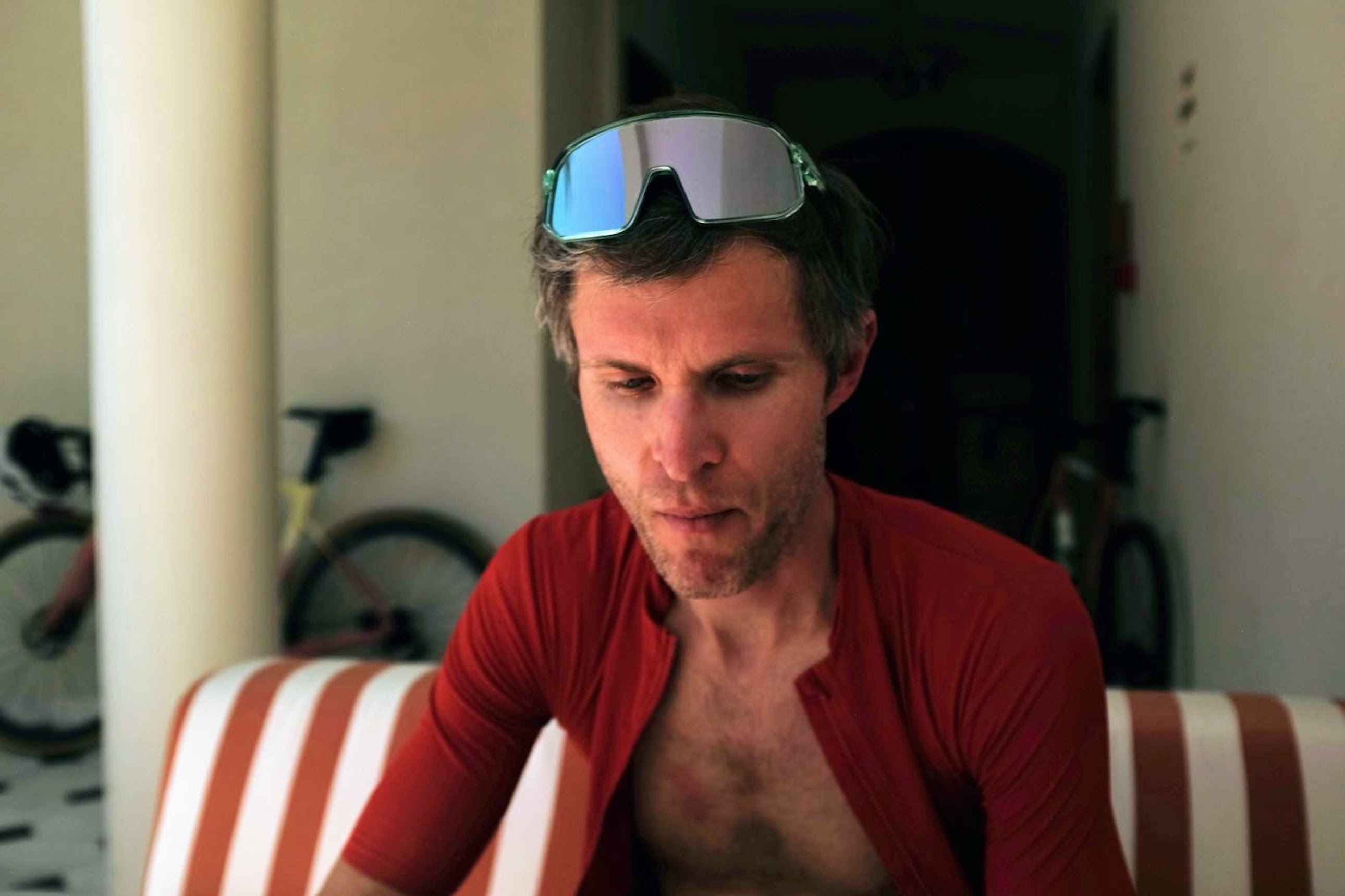
What does it take to ride 3,000 miles across the full width of the USA non-stop? That is the challenge taken on by those hardy, if not foolhardy, souls who enter Race Across America (RAAM).
With a strict cut-off time of 12 days for solo riders, 250 miles per day is the bare minimum. No time for sleep, just the occasional nap. Those riding in teams, sharing the workload, must ride almost 350 miles per day to finish within nine days.
As the race’s homepage prominently states, RAAM is 30 per cent longer than the Tour de France and covered in roughly half the time. Hardly surprising, then, that the drop-out rate hovers around 50 per cent.
>>> Lachlan Morton wins unassisted 2,000km Land’s End to John O’Groats endurance race
How do amateur riders with jobs, families and social lives manage to squeeze in the necessary training? The question applies not only to RAAM, of course, but any event — be it ultra, sportive, Audax or stage race — where the duration pushes competitors into unknown territory, over distances that literally cannot be rehearsed or practised.
We visited two hard-pressed amateurs squeezing in as much training as they dared around demanding full-time jobs as they prepared to compete as a two-man team in RAAM 2019.
Meet the riders
Get The Leadout Newsletter
The latest race content, interviews, features, reviews and expert buying guides, direct to your inbox!
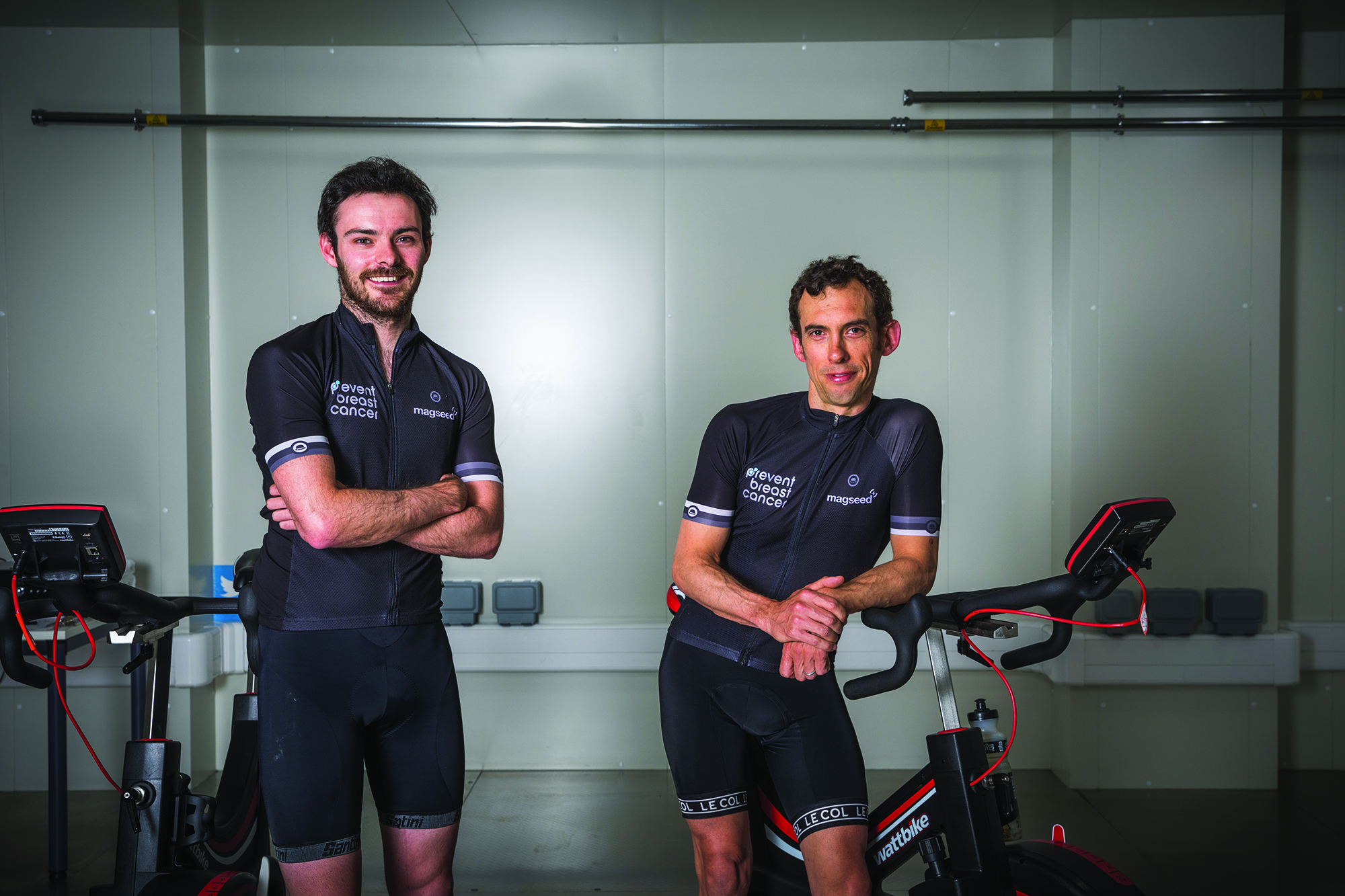
James Harvey
Age: 45
Hometown: Kettleshulme, Cheshire
Occupation: Oncoplastic breast surgeon
Sporting background: Ultra runner
Tom Allen
Age: 27
Hometown: Manchester
Occupation: Deputy CEO at BASIC (Brain and Spinal Injury Centre)
Sporting background: Crit racer
What stood out as truly exceptional about the endurance challenge facing James Harvey and Tom Allen? It wasn’t just the fact they were amateurs with full-time jobs; it was the nature of their work. How could a cancer surgeon and deputy CEO find the time, as well as the mental and physical energy, to get themselves fit enough to race non-stop across the USA? To find out — as they were hitting the peak period of their training in early May — we went to Manchester to follow them over the course of an action-packed day.
6.30am: High Peak, the day begins
As we thread our way towards Harvey’s hilltop home on the western edge of the Peak close to the Cheshire/Derbyshire border, the road rises and falls relentlessly at gradients that fill me with relief that we’re travelling by car. We disturb Harvey halfway through his breakfast, and a few minutes later Allen emerges bleary-eyed to join him. Allen lives in Manchester but rode over last night, so as to commute with Harvey this morning.
>>> Subscriptions deals for Cycling Weekly magazine
This has been the pattern for the past 18 months: the pair have been meeting up as often as possible to train together and lend each other moral support as they prepared for the hardest endurance challenge of their lives. Whose idea was it to take on Race Across America (RAAM), an ultra event widely regarded as the toughest race in the world?
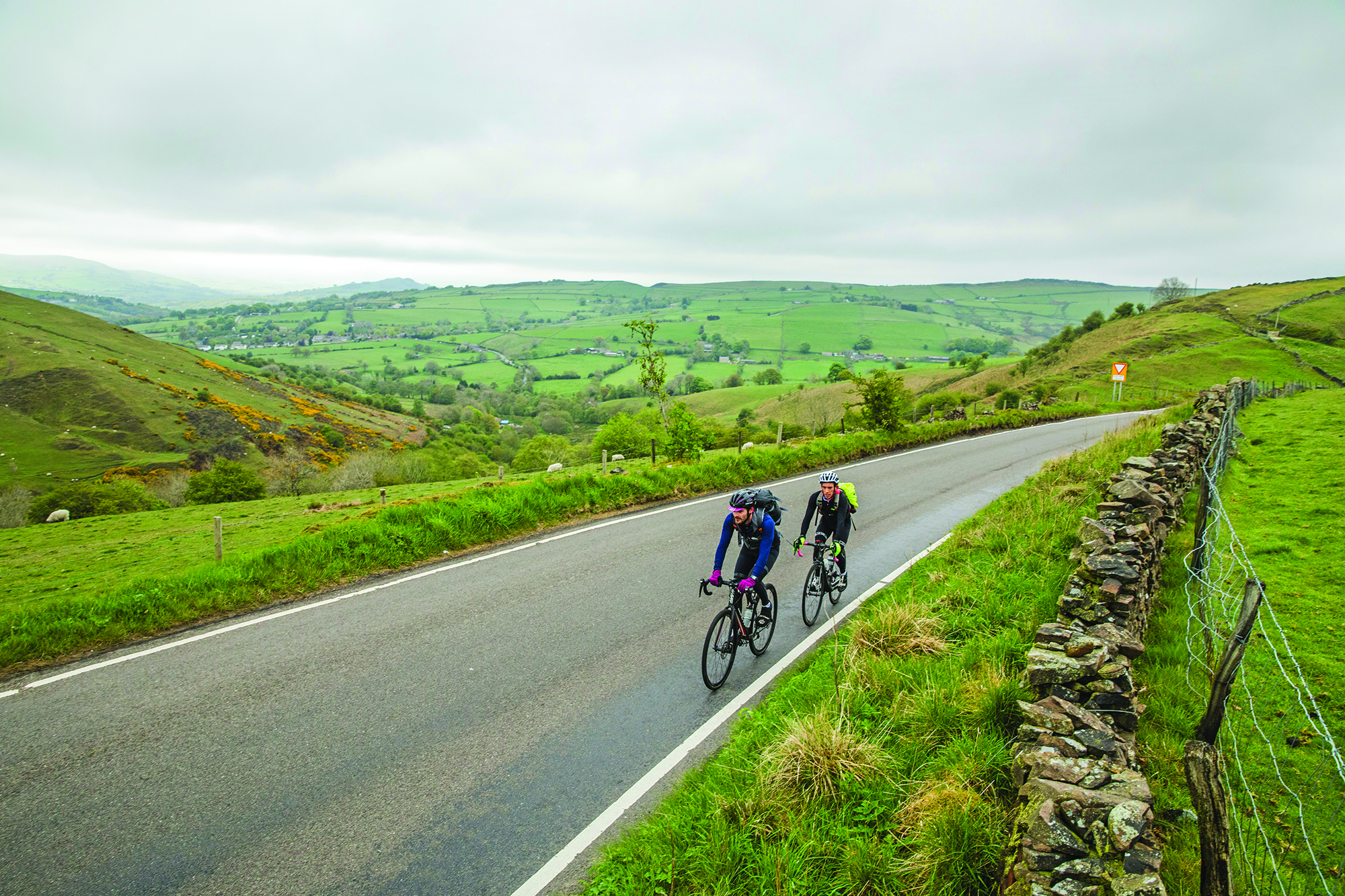
“We’d done London to Paris and the Italian lakes sportive together,” says Allen, “and a few months later James did an internet search for the ‘world’s hardest bike race’ and Race Across America came up. Then he probably looked through his contacts to see who was stupid enough to take up the challenge—”
“No, I knew it was you, Tom,” Harvey interrupts, deadpan.
I realise there is a certain amount of banter going on — but did they really understand the magnitude of the race?
“We hadn’t a clue,” admits Harvey, “but we wanted to do another charity ride and neither of us wanted to ask our friends or family for sponsorship for something that sounded a bit like a holiday. It needed to be something pretty big, and we just landed on Race Across America literally from a Google search.”
Seriously? Aren’t they having second thoughts since learning about the realities of RAAM?
“Yes and no,” says Allen. “It’s just everything with Race Across America: the logistics, the cost, the sheer size of it. It would have been nice to take on something a little bit smaller, yeah.”
There was no turning back now, with the race just a month away.
7am: Morning commute to Cheadle
We follow the duo on their 16-mile commute north-west across the Peak and into south Manchester, stopping briefly for photos. Harvey is a breast cancer surgeon, and his first clinic of the day is at the BMI Alexandra, a private hospital in Cheadle. After 90 minutes of consultations, he is back in his shorts and ready for a sponsored leg shave. Word goes round the hospital and within minutes a small consulting room is packed full of female nurses and reception staff baying to pay a fiver to literally tear a strip off their consultant colleague’s hairy legs.

10:30am: Ride to Wythenshawe
Wasting no time, Harvey is back on the bike by 10.30am, leaving Allen working remotely at his laptop. The surgeon’s next stop is a couple of rainy miles north at the Wythenshawe NHS hospital, where he has a meeting to attend and a pile of paperwork to catch up on. It’s been a busy week, he tells us; only yesterday he was performing several hours of reconstructive surgery on a woman who’d undergone breast enlargement at an unregulated overseas clinic and paid the price. How does he maintain the mental freshness for such zero-margin-for-error work while training two to three times a day?
>>> Cycling Weekly is available on your Smart phone, tablet and desktop
“It takes its toll,” admits Harvey, “and the mental fatigue sneaks up on you. It’s been 18 months without having 10 minutes to myself at any point. There’s always something else to do, whether it’s social media, chatting to potential sponsors, or work — you have literally no time to yourself.” On that note, we leave the medic to his work and head off for lunch.
2pm: Environmental chamber training
Having been up since 5am, I’m starting to feel a little weary — but there’s no rest for James and Tom. We reconvene at the Manchester Institute of Health and Performance, an almost futuristically hi-tech centre equipped with cryotherapy chambers, hydrotherapy pools, biomechanics labs, and much else besides — it’s the athlete’s equivalent of Willy Wonka’s Chocolate Factory.
Our duo are here to use the environmental chamber, in an attempt to acclimatise to the kind of heat and altitude they’ll have to tolerate during RAAM — over 40ºC through the deserts of Arizona and above 3,000m as they cross the Rockies. They will share the riding 50/50: alternating 45-minute shifts during the daytime and four-hour stints over night. What’s the scariest aspect of the race?
“Lack of sleep scares me most,” says Harvey without hesitation. “You can prepare for heat and altitude, to a certain extent, but the lack of sleep... It’s really going to get us from day four and I don’t know what that’s going to feel like.”
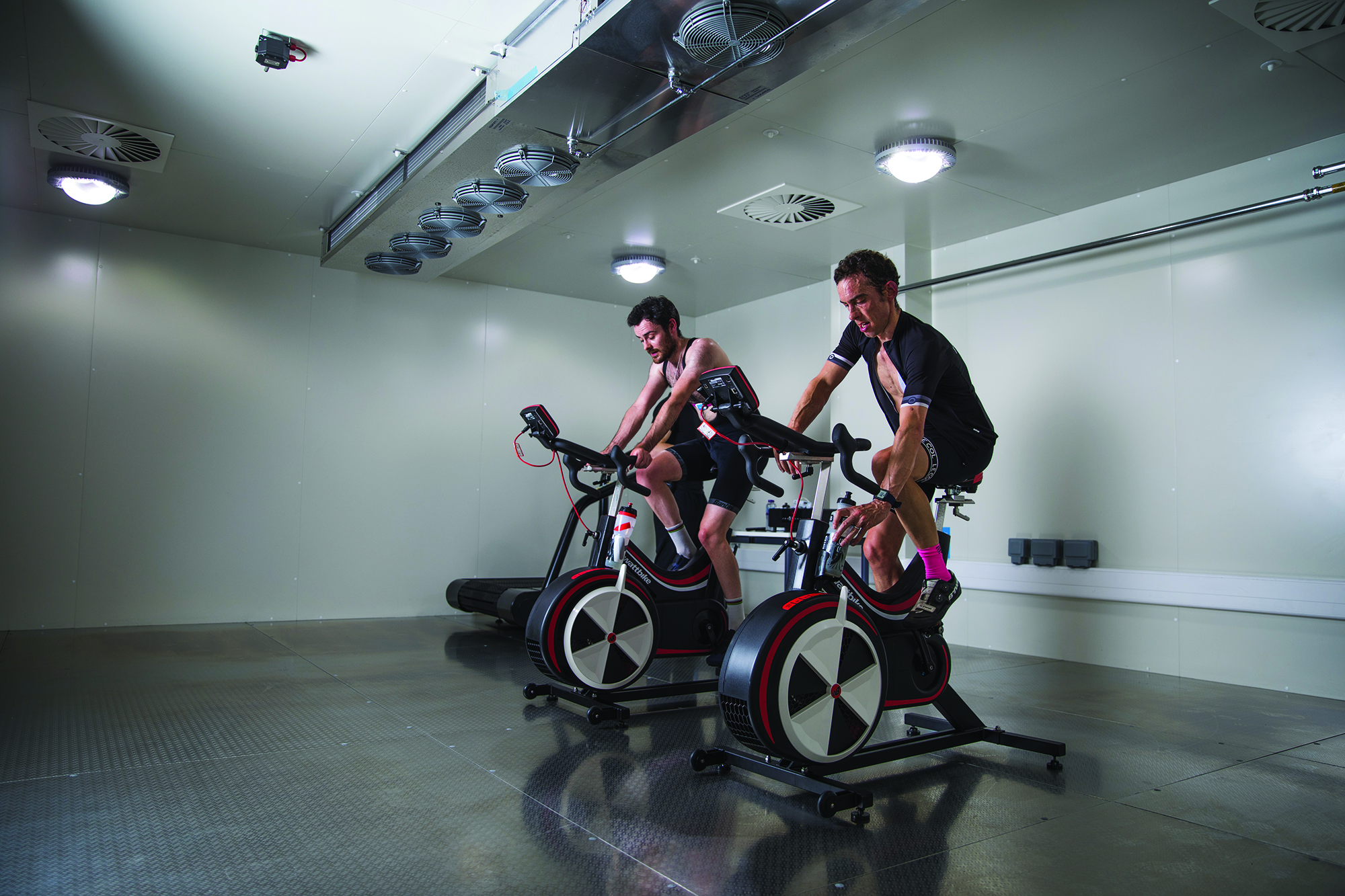
Allen agrees: “It’s the unknown, really. We’ve been to 38-39ºC and up to the altitude in the chamber, and we’re getting better in those conditions. But loss of sleep can change everything from a mental point of view: we’re going to have five, six hours a day when we don’t want to be there; we could hallucinate, we could crash.”
Today is a steady hour at 30ºC and 2,000m simulated altitude. How can they know how to pace RAAM, a race with so many variables and unknowns? Do they have a target finish time?
“Initially it was eight days,” says Allen, “but it’s been moving towards seven.”
“Ultimately, it’s changed,” Harvey cuts in, “because my initial thought was that I’d be putting out 120-140 watts, but we’ve progressed since then. If we can sit at 180-210 watts the whole way across, we’d know that’s as fast as we can go.”
Both riders report a sea change in their fitness: 50-watt increases in FTP — more power and less weight (Allen has lost 12kg). The two-man record for RAAM is 3,069 miles in six days 11 hours, averaging 19.8mph, set last year by USA pairing of Mark Pattinson and Eneas Freyre. For James and Tom, finishing in less than eight days would be a huge achievement and could even put them on the podium.
4pm: Back to work
After the hot, gruelling chamber session, it’s back to work for James and Tom, and later another hour-long bike commute. They must feel as though their lives have been totally consumed by RAAM training — what’s been the impact on their personal lives?
“When I get home from work at 6.30pm,” says Harvey, “I try to make sure I spend two hours with the family, having dinner and normal life, and put my [eight-year-old] son to bed, and that’s when I’ll go out training or get the turbo out, late at night.”
It has evidently caused tension. “We had a conversation on Christmas Eve that went like this: ‘Daddy, please don’t go out cycling tomorrow.’ I was like, ‘Can’t I just go out for an hour while you’re playing?’ He said, ‘No, Dad, it’s Christmas Day’ — OK, no problem.”

Allen doesn’t have kids, but he’s feeling this strain too: “If ever I do an event like this again, I’ll be filing for divorce — and I’m not even married!
In my head, it’s 60/40 race-preparation to personal time, but I asked my partner and she said it’s more like 80/20 — it’s all the little details, the equipment, the cars, the wind direction, you just become really obsessed.”
Before we leave them, I want to know where the motivation comes from — what keeps the fire burning in their bellies?
“We’ve talked a lot about this,” says Harvey. “When I did the UTMB [Ultra-Trail du Mont-Blanc] I was focused on somebody who had been through something much harder — if they could get through that, I thought, then I could get through 36 hours of running.”
The round-the-world record-holder has been an inspiration too. "We went to see Mark Beaumont, who did 240 miles a day every day for 80 days — if he can do that, we can do 200 miles each for eight days, no excuses.”
Finally, what was Allen’s position in the motivation chat? “We had to figure out why we want to do this. From a personal point of view, it’s who do you want to see at the end? I’m lucky enough that my partner and my dad are part of the crew. To reach the end of this amazing event and be with them, that will incredible.”
James Harvey and Tom Allen are raising funds for Prevent Breast Cancer. You can donate here.
This article originally appeared in the print edition of Cycling Weekly, on sale in newsagents and supermarkets, priced £3.25.
At the time this article went to press (June 20) Harvey and Allen have just passed the 1,500-mile point. Having started on Saturday June 15 they've averaged 326 miles per day (13.6mph), which projects a 10-day finish time - some way off their seven-day target.
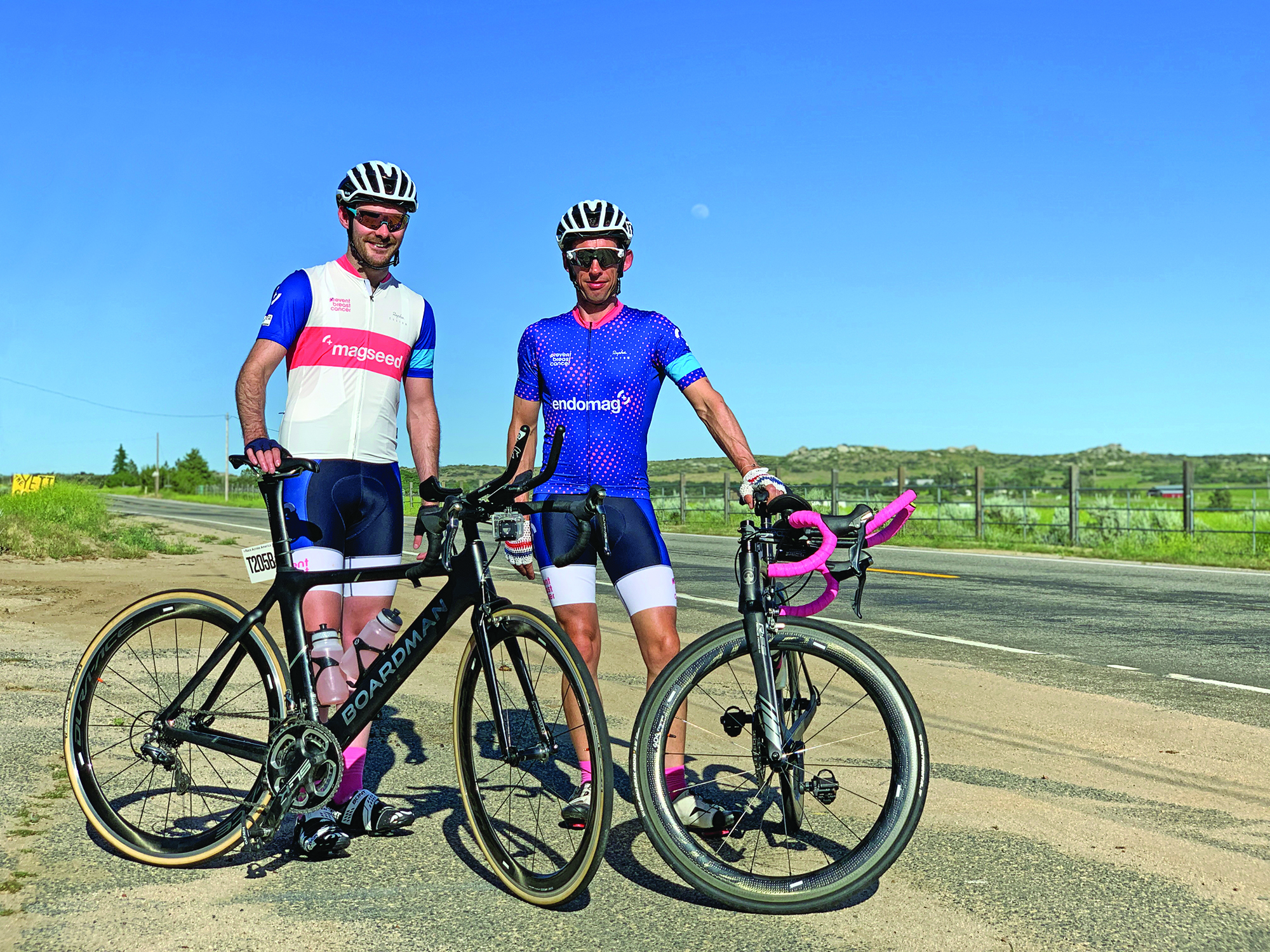
"They have endured big challenges in the first half," Allen's dad Eddie tells me from the support truck, "from 47°C temperatures in the California and Arizona deserts to a lightning storm while climbing Wolf Creek Pass in Colorado."
And when it rains, it pours..."Tom has suffered a viral chest infection that put him out of action for a day, leaving James to put in a big solo effort to keep them in the race. Now Tom's been given the all-clear, they're back in the mix as the race heads into its second half."
Update:
At around 4.30am on Saturday June 22 near Newton, Illinois, Tom was riding through a thunderstorm when lightning struck an electrical substation, which exploded less than 10 metres away from him.
Tom was unharmed, but himself and the team were said to be traumatised by the incident. Combined with mounting injuries and a time deficit, they decided to abandon the event with 800 of the 3,000 miles left to ride.
Tom and James said they were immensely disappointed to have to abandon the event but decided that it would not be right to continue, with thunderstorms set to continue across Illinois and beyond for the next few days.
They have currently raised £105,515 of their £125,000 goal for Prevent Breast Cancer.

Thank you for reading 20 articles this month* Join now for unlimited access
Enjoy your first month for just £1 / $1 / €1
*Read 5 free articles per month without a subscription

Join now for unlimited access
Try first month for just £1 / $1 / €1

David Bradford is features editor of Cycling Weekly (print edition). He has been writing and editing professionally for more than 15 years, and has published work in national newspapers and magazines including the Independent, the Guardian, the Times, the Irish Times, Vice.com and Runner’s World. Alongside his love of cycling, David is a long-distance runner with a marathon PB of two hours 28 minutes. Having been diagnosed with retinitis pigmentosa (RP) in 2006, he also writes about sight loss and hosts the podcast Ways of Not Seeing.
-
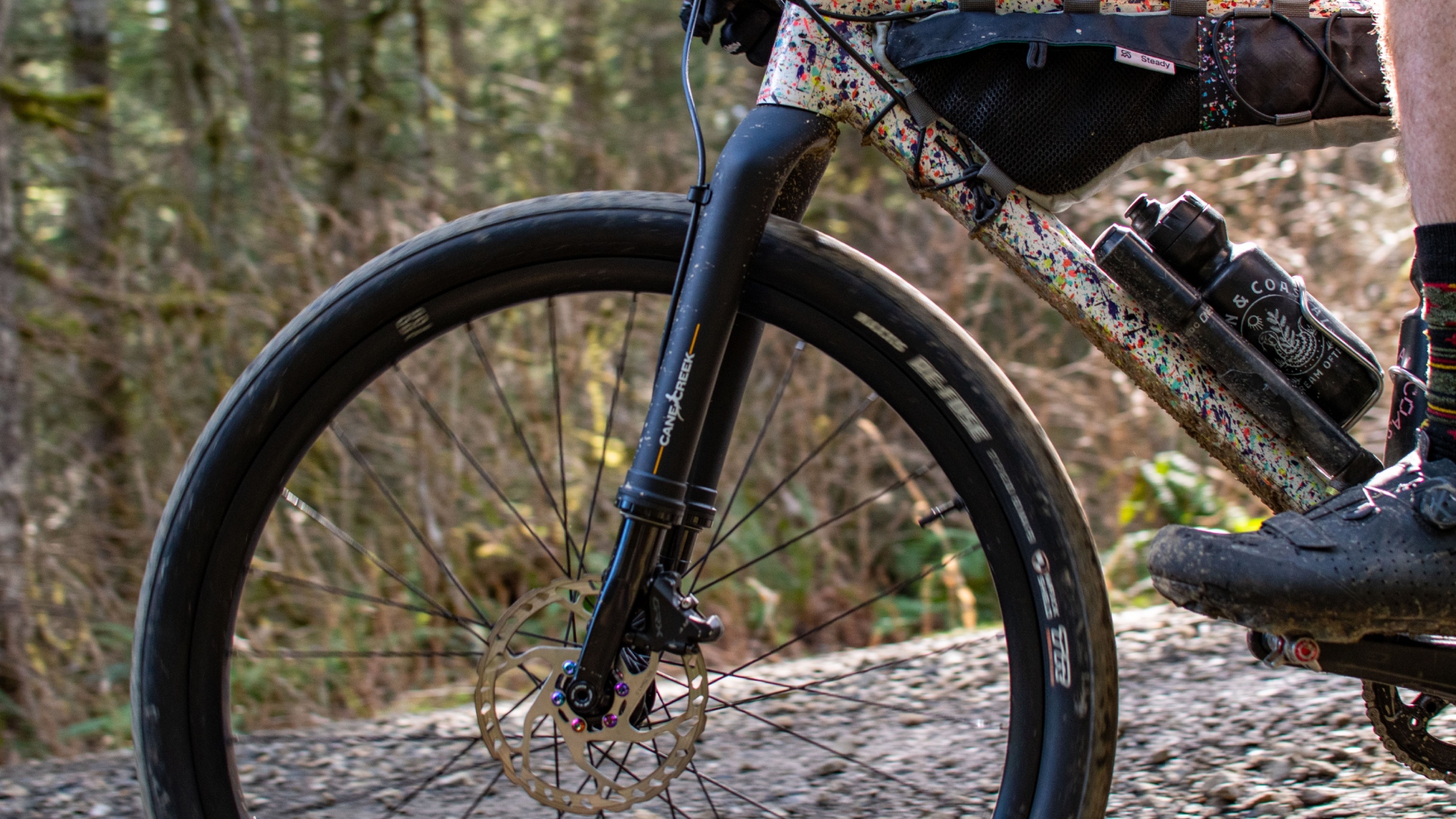 Review: Cane Creek says it made the world’s first gravel fork — but what is a gravel fork, and how does it ride?
Review: Cane Creek says it made the world’s first gravel fork — but what is a gravel fork, and how does it ride?Cane Creek claims its new fork covers the gravel category better than the mini MTB forks from RockShox and Fox, but at this price, we expected more.
By Charlie Kohlmeier
-
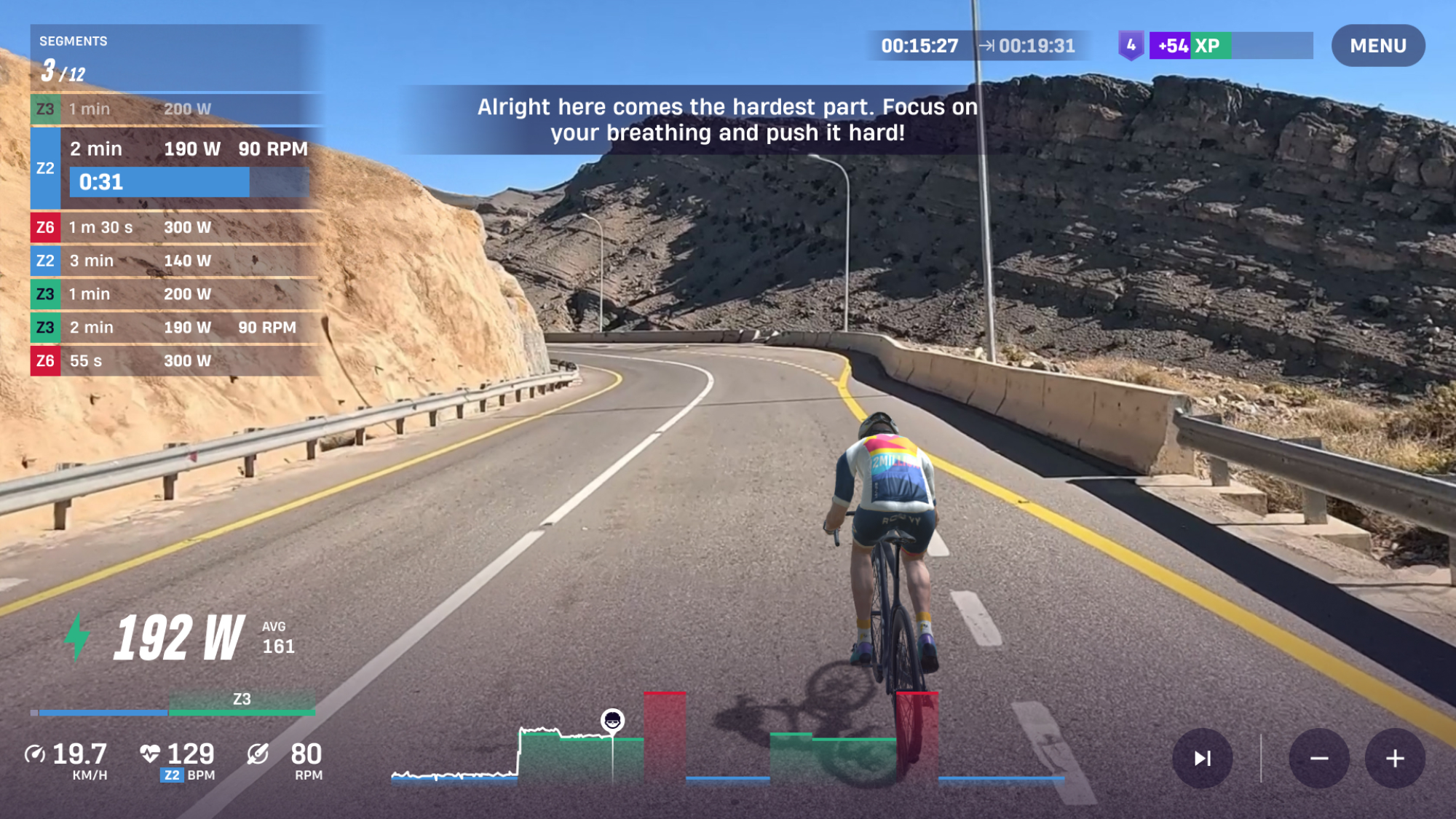 ROUVY's augmented reality Route Creator platform is now available to everyone
ROUVY's augmented reality Route Creator platform is now available to everyoneRoute Creator allows you to map out your home roads using a camera, and then ride them from your living room
By Joe Baker